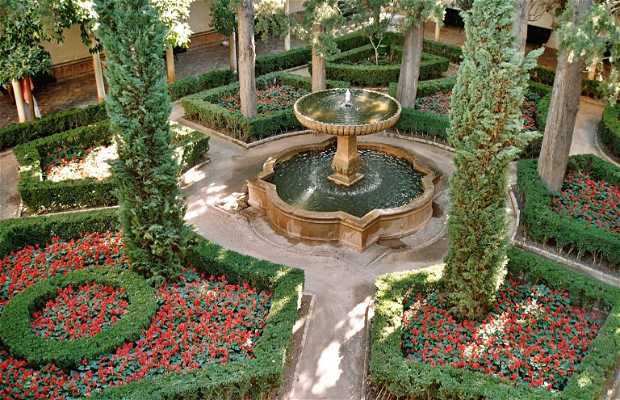The 'Nasrid Baroque'
At the back of the Harem, in the space that makes up the Sala de Dos Hermanas, one finds a small room with such an abundance of ornaments, muqarnas and tiles it’s considered the epitome of “Nasrid Baroque".
Also known as the Lindajar gazebo (a name that I personally like very much), adapted to English from al-'Ayn Dar Aisa, is "eyes of Aisa's house" as it was exposed to the outdoors. Today what Aisa’s (The Sultan’s favourite) eyes see is the charming garden named after her.
The small garden is cosy, also called “de los Naranjos" (oranges) or "de los Mármoles" (marbles). Its marble fountain stands out, of course, decorated with great poetry. In actual fact, this patio is not from the Nasrid period but the later Christian one, since it was created with the building of the Rooms for Carlos V, expanding what they called the "Old Palace". From here, begins the journey to the Peinador de la Reina (Queens Hairdresser) and the rooms where Washington Irving wrote his "Tales of the Alhambra".






